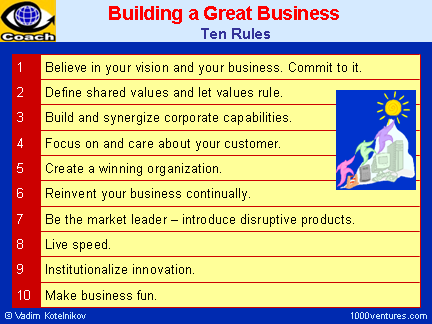|

|
8 Attributes of Corporate Success
By Peters and Waterman |
|
→
3 Strategies of
Market Leaders
|
|
The Importance of Being First-to-Market
Being first in any market category is going to
give you the edge – being the leader comes from being first. It's much
easier to get into the mind of
consumers first that try to convince people you have a better product or
service than the one that did get there first.
Improvements are always made to product/service inventions and
innovations
but the first in has a head start. Once you are the leader, a position
mostly gained by being first, it is pretty hard for
competitors to dislodge you, as long as you keep your products up to
date and of comparable
quality...
More
Case in Point
25
Lessons from Jack Welch
Jack Welch's goal was to make General Electric (GE)
"the world's most competitive enterprise." To achieve this goal, Welch
urged all GE leaders to
stretch their
business strategy, "Don't ever settle
for mediocrity. They key to stretch is to reach for more than you think is
possible. Don't sell yourself short by thinking that you'll fail."11
Do the best possible
– and then reach beyond. Stretch "essentially means
using dreams to set business targets
– with no real idea of how to get there. If you
do know how to get there – it's not a stretch target."...
More
|